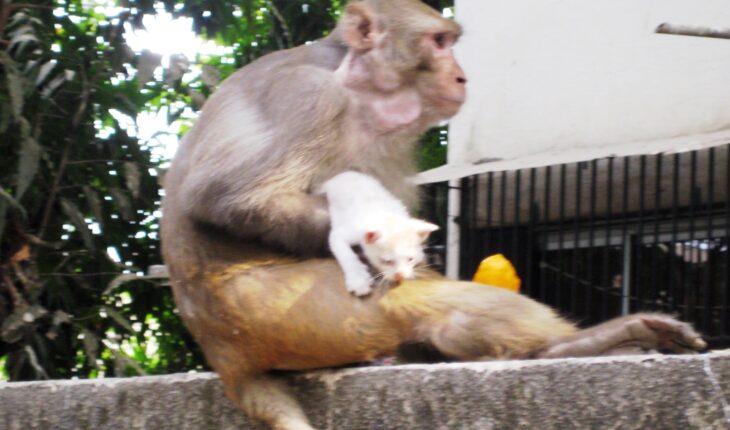By Dominick Rodrigues
Mumbai/Bengaluru : Monkeys harassing humans has always been a problem over years and the issue was highlighted recently in Bengaluru where the Karnataka Government voted to sterilize monkeys in this regard.
Yet as trees get chopped and forests denuded in the name of development and progress, the creatures of the wild have no place to go except citywards — to fuel increasing incidents of monkey attacks on humans, claim wildlife officials and activists.
Mumbai has been witnessing over the decades leopards and huge pythons coming out of the Sanjay Gandhi National Park in Borivali suburb. A Russells Viper created a rumpus of sorts in the IIT campus when it was discovered by horrified students.

In one incident, retired ex-presidency postmaster N M Kenikar was busy performing his morning puja in his flat when a monkey swung in through the window, clung to his feet, jumped on his bed and drank water from a container. However, when Kenikar attempted to set right a puja coconut upset by the monkey, the simian attacked him by biting and scratching before fleeing the spot.
Kenikar complained to the police and was returning back home when he saw the same monkey fighting with a dog in the building. The monkey was caught by a hutment dweller and set free in the nearby forest, but seemed to have reappeared again when complaints came in about foodstuff disappearing from households. The monkey was later trapped by a special “monkey squad” sent by the then DCF Vishwas Walke of the SGNPark, thus bringing the errant monkey’s escapades to an end.
Walke said such monkeys were mostly captured and trained by gypsy “madaris” to perform tricks or beg for money, and often set free if unable to perform. Disoriented by their sudden freedom and far away from the forests, these monkeys resorted to survival the only way they could – +grab and run+ tactics, he said.
Yet another incident witnessed a monkey with a kitten leaping through the treetops in Bandra suburb of Mumbai and begging food from people. The monkey, which appeared to be suffering from a lump in his jaw, sat on a wall and ate an offered mango while the kitten mewed piteously to no avail. However, when a crowd gathered, the monkey fled with his victim and was seen no more.
A friend owning property near Shimoga in Karnataka often went there from his Bengaluru business to rejuvenate his burntout body. However, the recreation ended up often as a nightmare with monkey gangs noisily raiding his areca plantation, he said.
The monkey issue became a subject of discussion recently in the Karnataka Legislative Assembly, where the Government highlighted plans to sterilize captured male monkeys in a bid to reduce attacks on humans and damage to agricultural crops in the state. About 12 doctors have been trained to sterilize the marauding monkeys and release them back in the wild again, officials said.
While the monkey sterilisation programme has been successfully conducted in Himachal Pradesh, the Karnataka Forest Department has taken up a programme to trap in cages the rampaging monkeys and sterilize them in a mobile van fitted with related medical equipment. Plans are also afoot to establish a Rs 25-lakhs rehabilitation centre (monkey park) for monkeys at Sagara forest division in Shivamogga district between 2020-21, the officials said.
However, adequate compensation in Karnataka for crops destroyed by monkeys also remains an issue with the affected farmers lamenting the amount given against their loss caused by the rampaging forest denizens that include also elephants, wild boar and deer. The Forest Department compensation of Rs 500 per acre is being described as +negligible+ by the affected people in comparison to the cost of cultivation and prevailing prices of food crops.






